Daniel Jörgens
Division of Brain, Imaging, and Behaviour, Krembil Research Institute, Toronto Western Hospital, University Health Network, Toronto, Canada, KTH Royal Institute of Technology, Department of Biomedical Engineering and Health Systems, Stockholm, Sweden
Merging multiple input descriptors and supervisors in a deep neural network for tractogram filtering
Jul 11, 2023Abstract:One of the main issues of the current tractography methods is their high false-positive rate. Tractogram filtering is an option to remove false-positive streamlines from tractography data in a post-processing step. In this paper, we train a deep neural network for filtering tractography data in which every streamline of a tractogram is classified as {\em plausible, implausible}, or {\em inconclusive}. For this, we use four different tractogram filtering strategies as supervisors: TractQuerier, RecobundlesX, TractSeg, and an anatomy-inspired filter. Their outputs are combined to obtain the classification labels for the streamlines. We assessed the importance of different types of information along the streamlines for performing this classification task, including the coordinates of the streamlines, diffusion data, landmarks, T1-weighted information, and a brain parcellation. We found that the streamline coordinates are the most relevant followed by the diffusion data in this particular classification task.
Assessing Streamline Plausibility Through Randomized Iterative Spherical-Deconvolution Informed Tractogram Filtering
May 10, 2022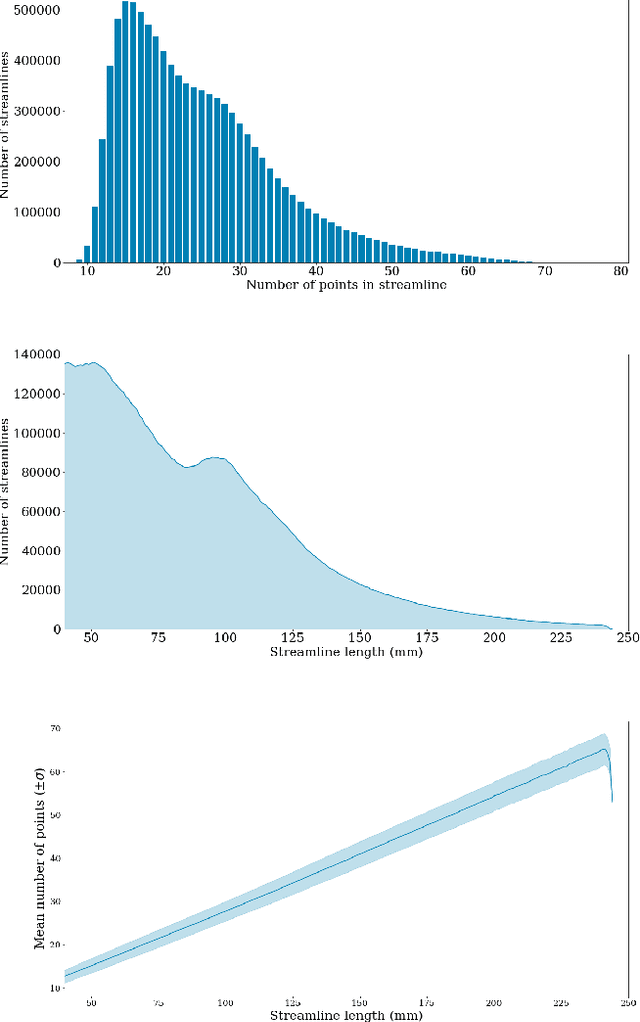
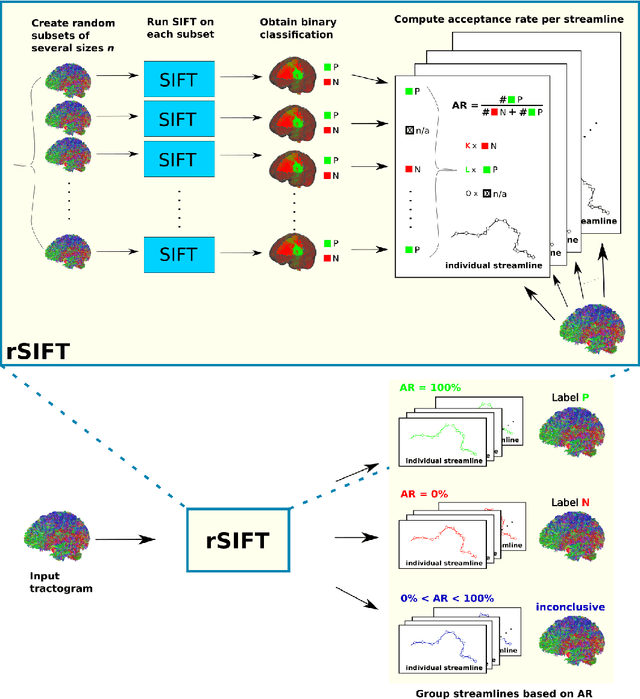
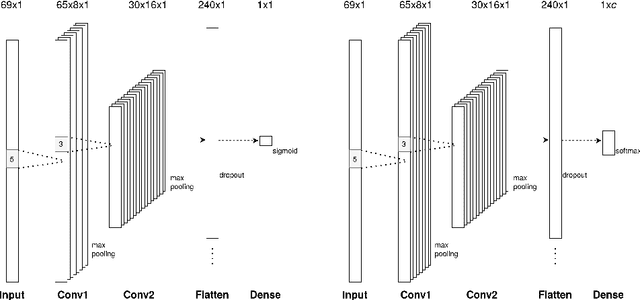
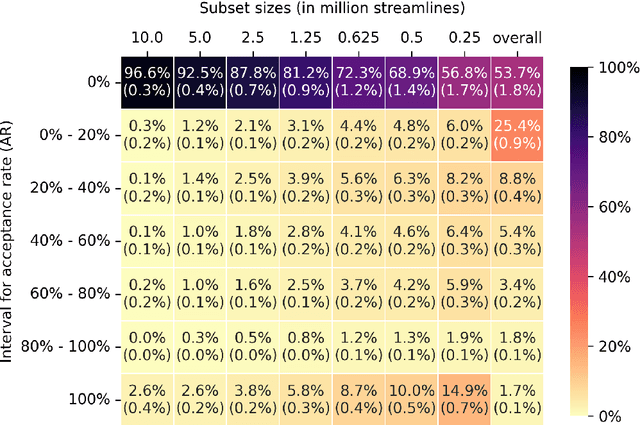
Abstract:Tractography has become an indispensable part of brain connectivity studies. However, it is currently facing problems with reliability. In particular, a substantial amount of nerve fiber reconstructions (streamlines) in tractograms produced by state-of-the-art tractography methods are anatomically implausible. To address this problem, tractogram filtering methods have been developed to remove faulty connections in a postprocessing step. This study takes a closer look at one such method, \textit{Spherical-deconvolution Informed Filtering of Tractograms} (SIFT), which uses a global optimization approach to improve the agreement between the remaining streamlines after filtering and the underlying diffusion magnetic resonance imaging data. SIFT is not suitable to judge the plausibility of individual streamlines since its results depend on the size and composition of the surrounding tractogram. To tackle this problem, we propose applying SIFT to randomly selected tractogram subsets in order to retrieve multiple assessments for each streamline. This approach makes it possible to identify streamlines with very consistent filtering results, which were used as pseudo ground truths for training classifiers. The trained classifier is able to distinguish the obtained groups of plausible and implausible streamlines with accuracy above 80%. The software code used in the paper and pretrained weights of the classifier are distributed freely via the Github repository https://github.com/djoerch/randomised_filtering.
Tractography and machine learning: Current state and open challenges
Feb 14, 2019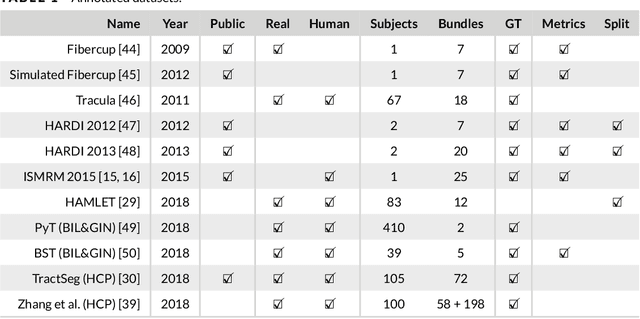
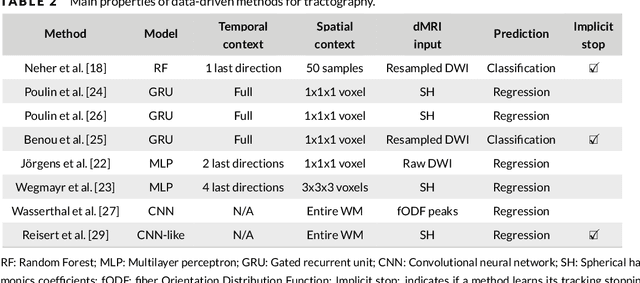


Abstract:Supervised machine learning (ML) algorithms have recently been proposed as an alternative to traditional tractography methods in order to address some of their weaknesses. They can be path-based and local-model-free, and easily incorporate anatomical priors to make contextual and non-local decisions that should help the tracking process. ML-based techniques have thus shown promising reconstructions of larger spatial extent of existing white matter bundles, promising reconstructions of less false positives, and promising robustness to known position and shape biases of current tractography techniques. But as of today, none of these ML-based methods have shown conclusive performances or have been adopted as a de facto solution to tractography. One reason for this might be the lack of well-defined and extensive frameworks to train, evaluate, and compare these methods. In this paper, we describe several datasets and evaluation tools that contain useful features for ML algorithms, along with the various methods proposed in the recent years. We then discuss the strategies that are used to evaluate and compare those methods, as well as their shortcomings. Finally, we describe the particular needs of ML tractography methods and discuss tangible solutions for future works.
 Add to Chrome
Add to Chrome Add to Firefox
Add to Firefox Add to Edge
Add to Edge